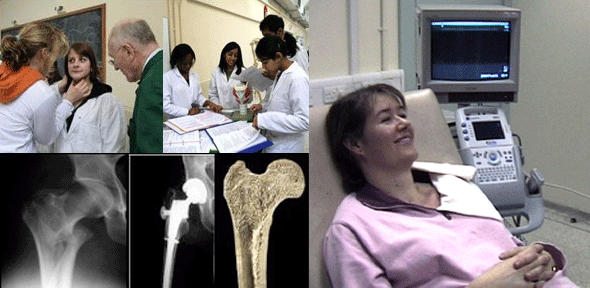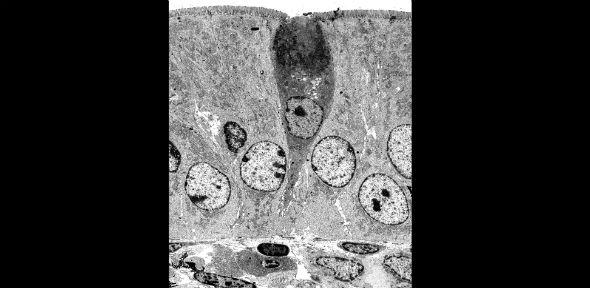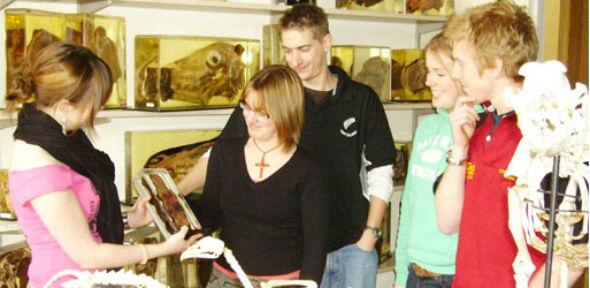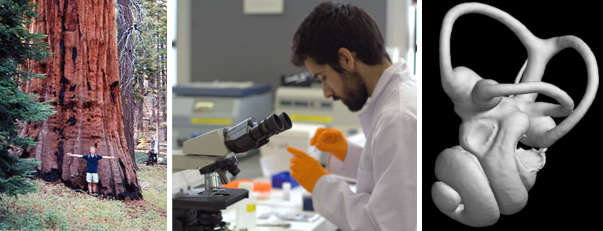- MedST IA Functional Architecture of the Body
- Med/VetST IA Histology
- Med/VetST IA Homeostasis
- VetST IA Veterinary Anatomy and Physiology
- NST Part IA Physiology of Organisms
MedST IA Functional Architecture of the BodyCourse organiser: Sarah Fawcett (slf43[at]cam.ac.uk) |
|

OverviewThe FAB course teaches topographical anatomy of the limbs and trunk mainly through hands-on cadaveric dissection. During practical classes, students also learn with prosected specimens, VH Dissector software and ultrasound scanning. Applied anatomy seminars relate anatomical knowledge to relevant clinical scenarios, with embryological development and more general topics being covered in lectures. The FAB Moodle VLE provides access to the teaching materials required for the course, as well as a variety of learning resources. Students may be interested in the other activities that take place at the Human Anatomy Centre. |
|
Med/VetST IA HistologyCourse organisers: Nick Brown (nb117[at]cam.ac.uk) and Milka Sarris (ms543[at]cam.ac.uk) Course Moodle page (current students only) Please go to Moodle to access the Histology Computer Modules images as pdf files. |
|
|
|
|
Med/VetST IA HomeostasisCourse organisers: Dino Giussani (dag26[at]cam.ac.uk) |
|
OverviewIn Homeostasis, you study the physiological systems which underpin the body's regulation of its internal environment and its responses to external threats. This includes nerve function, neuromuscular transmission, muscle, circulation, respiration, excretion, water balance, digestion, absorption, metabolism and thermoregulation. There are related practical classes in experimental physiology and histology (the microscopic structure of tissues). |
|
VetST IA Veterinary Anatomy and PhysiologyCourse organiser: David Bainbridge (db125[at]cam.ac.uk) |
|
|
|
|
NST Part IA Physiology of OrganismsCourse organiser: Matt Mason (Dept. PDN, mjm68[at]cam.ac.uk) |
|
OverviewPhysiology is the study of organ systems and how they help the body to deal with challenges. Our course, Physiology of Organisms, looks at and compares animal, plant and microbial physiology. It occupies an important central position within Cambridge's first-year biology courses, providing a wider functional context for the material covered in Biology of Cells while underpinning the broader material covered in Evolution & Behaviour. Physiology forms the foundation for future specialization in fields including neurobiology, pathology and pharmacology - the medical sciences - but our comparative course is also very relevant to zoology and plant sciences, and will be of interest to anyone curious about how living organisms function. Physiology is a broad and intellectually demanding subject. Over the course of the year you will be asked to consider the latest advances in cell biology and genetics, to use simple maths and physics to model biological systems and to design and control your own experiments to test hypotheses in our exciting practical classes. Our course does not assume knowledge of any particular A2-level course, but some background in biology, chemistry and physics will be useful. We very much hope that you will choose to read Physiology of Organisms, and that you will enjoy this year's lectures and classes. We believe that at the end of the year you will have found our course to have been not just interesting but also very useful for your future career directions! |
|





